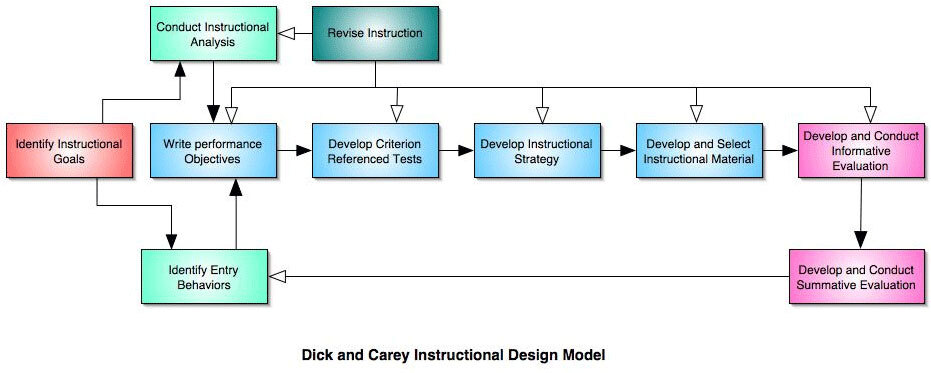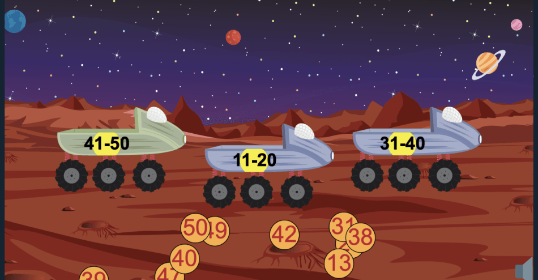In a small company, the duties of an instructional designer and an eLearning developer could be combined in one person. However, larger corporations prefer separating the two. Instructional designers handle the learning experience (curriculum, teaching methods, practical exercises) and the theoretical foundation. eLearning developer implements the design and ensures it works exactly as intended.
How Belitsoft Can Help
We can leverage our 10+ years of experience in eLearning development to assist you with the following:
- Learning course development. Using our knowledge of modern authoring tools, we can make a series of interesting and effective lessons for your learners.
- Custom eLearning development. Unique course development is our specialty. If you have an idea that no authoring tool can bring to life, that’s something we’ll be glad to help you with.
- Instructional design. Choosing the appropriate methodology, setting reasonable objectives, and ensuring that the course will do what you want it to do.
- Gamification. Designing a system of incentives that will keep your learners immersed and engaged.
- Serious games development. If you have an idea of a game-based learning program, we can assist you with all the technical matters from game design to coding and post-launch support. We can do it for PCs, web, and mobile platforms.
Definitions
An instructional designer is a person who systematically designs, develops, and delivers instructional products and experiences, both digital and physical, in a consistent and reliable fashion toward an efficient, effective, appealing, engaging, and inspiring acquisition of knowledge. They are the person busy defining the objectives of a course, interviewing subject matter experts, planning out gamification incentives, etc.
In a digital course, an instructional designer will prepare storyboards, work with designers to set up the appropriate visual style, and explain to the developers how each function should work.
Put simply, an instructional designer lays the foundation of a course like an architect plans a building, although they might work on content.
An eLearning developer, on the other hand, is responsible for implementing the design. They will study the storyboard to locate problematic areas, for example, features that can’t be implemented with the selected tools or functionality that would overextend the budget. Then they will use one of the authoring tools and potentially some custom programming to create the learning course.
One thing they both do is working with learner feedback. An instructional designer deals with changes to the lessons and the curriculum in general, while the developer handles the technical side of the things.
Instructional Designer’s Skills Set
This is what an instructional designer should know and be able to do:
- Working with subject matter experts. One can’t be a master in everything. To create a good learning course, an instructional designer will interview people who have intimate knowledge of the subject and transform that knowledge into educational content.
- Content creation. An instructional designer writes scripts for educational videos, creates texts, and plans out presentations. An eLearning developer will then turn them into a finished course.
- Scientific approach. An instructional designer makes crucial decisions in crafting a course. These decisions should be based on solid research and reliable data to ensure the course’s effectiveness.
- Selecting the right learning methodology. For example, kids react better to game-based approaches than adults.
- Team management. An instructional designer can lead a dedicated development team that works on the course: eLearning developer, graphic designer, actor, etc. They are responsible for the entire project.
One thing both specialists work on is learner feedback. Instructional designers address the issues with the curriculum and the general direction of each lesson, while eLearning developers handle all the technical matters.
Instructional Design Models and Theories
These are some of the common approaches that instructional designers use in their work.
ADDIE
The acronym stands for the five phases of this process: Analysis, Design, Development, Implementation, and Evaluation. This is one of the most widespread approaches and often is the foundation for others of its kind.
- Analysis. This is the phase where the instructional designer defines the problem to be solved, estimates the learners’ skill level, and sets the goals for the course.
- Design. This stage is for planning the content and its format and partitioning it into lessons. It also includes choosing the evaluation methods, designing the interface, and (possibly) prototyping.
- Development. Once the course is planned out, it is time to actually develop it. This can be the shortest or the longest part of the process, depending on the nature of the content.
- Implementation. At this stage, the course is put into practice. However, it also includes training the instructors - explaining all the bits and pieces of the course to them. As a result, they should know both the subject matter and the specific teaching methods used.
- Evaluation. This is a strange phase: some of it goes on continuously throughout the whole development process, but there is also a dedicated evaluation stage at the end to ensure that the course achieves its goals set up at the analysis phase.
ADDIE seems reasonable, but it actually has significant flaws.
ARCS
This is another acronym, that stands for Attention, Relevance, Confidence, and Satisfaction - the four things that this model focuses on. It was developed by John Keller, a prominent scholar in the field of instructional design.
- Attention. The first step is attracting the learners’ attention and making sure it remains focused. This can be done in many ways: active participation (e.g. games, practical exercises, roleplay, etc.), content variability, humor, and more.
- Relevance. The second step is demonstrating that your content will be useful to the learners. This can be done by showing examples of how this will help them today or in the future, being successful in the field you are teaching or inviting successful guest speakers.
- Confidence. The learners need to understand that the success is definitely possible. Their confidence can be reinforced by setting incremental goals, providing encouraging feedback, giving the learners some measure of control over their studies, etс.
- Satisfaction. There is scientific evidence showing that enjoyment is a major success factor in teaching. This means it is important to make the learning process fun to improve the outcomes. This can be done by giving people an option to use their skills in a real-world setting, rewarding success in challenging tasks, or even adding elements of entertainment.
Dick and Carey
This model was developed by Walter Dick, Lou Carey, and James Carey. It builds on ADDIE by adding the behavioral elements.

Dick and Carey model consists of 10 steps:
- Identify instructional goals. These goals are the expectation for the learners at the end of the course. They can be broad and describe what your students should be able to do.
- Conduct instructional analysis. The first step is to find out what do your learners need to know and be able to do to achieve the desired results. After that, you can plan the steps that lead the learners to the goal.
- Identify entry behaviors. Gather the relevant data, including your learners’ demographics, skill level, motivation level, domain knowledge, etc. Then use it to set up the learning process in a way that doesn’t have them revisiting what they already know but also lets their existing knowledge support the new information.
- Set up performance objectives. Such objectives need to include the description of the skill to be learned, the metrics to evaluate these skills, and the conditions under which these skills are used.
- Develop assessment tools. This is the stage where you should develop tests and quizzes that evaluate both the learners’ progress and the instructional process.
- Develop an instructional strategy. This means planning out the activities that will help the learners achieve the instructional goals from item 1.
- Develop and choose learning materials. Reuse the fitting learning content to save time or create new modules.
- Design and conduct a formative evaluation. This means checking whether your course is good enough while it’s still in development.
- Conduct a summative evaluation. Once your course is live, monitor the learning outcomes, and see if the course achieves its goals.
- Revise instruction. Use the data from the evaluation to improve the course, if necessary.
Merrill’s Principles of Instruction (MPI)
This approach was postulated by M. David Merrill, Professor Emeritus of Utah State University in his paper. The principles mentioned are the fundamentals of effective teaching.
- Learning is promoted when learners are engaged in solving real-world problems. Adding meaningful context (like showing how geometry is useful for architecture) improves the learning outcomes.
- Learning is promoted when the previous relevant experience is activated. If learners already have knowledge and skill that would help them, start with engaging it. If they don’t, give them this foundation.
- Learning is promoted when the instruction demonstrates what is to be learned. Show the learners what they will be able to do over the course of the course and by its end to reinforce motivation.
- Learning is promoted when the learners are required to use their new knowledge or skills to solve problems. Include practical exercises after the theoretical lectures to increase knowledge retention and demonstrate the application of the knowledge.
- Learning is promoted when learners are encouraged to integrate their new knowledge or skill into everyday life. This is pretty self-explanatory - if a person keeps using their new skill daily, it will only improve their efficiency.
Which Instructional Design Model Is the Best To Go With?
All and none. As usual, the answer depends entirely on you, your goals, and your conditions. However, we can give some pointers.
-
Account for your experiences. If you already had encounters with certain models, you probably know their advantages and disadvantages. Some of them might be just what you need or might become what you need with a little tweaking.
Keep in mind, that you should also note the prejudices that might keep you from selecting approaches that would suit you.
- Start with your goals.The objective comes before the means to achieve it. Thankfully, pretty much any model includes setting goals as a starting point. Go to it and choose the approach that will give you the results you want in the best way.
- Evaluate all the elements of a model. You might find yourself attracted to a certain element from ADDIE and ignore the negative ramifications of the rest. That’s why you should evaluate the approach holistically. Also, there is nothing stopping you from combining several of them, if it suits you.
- Consult your eLearning team. Your combined knowledge and experience would be more than the sum of its parts. Besides, they would be the people implementing the model you’ve chosen, so it would be wise to consider their opinion.
- Consider your audience. Your learners will be the recipient of everything developed with your model, so pick the one that suits their preferences.
- Plan in advance. The world is changing rapidly. Make sure you will pick a model that would lead to lasting content, applicable in the long term.
Instructional Design Strategies for eLearning
There are potentially hundreds of viable strategies and their combinations that you can use to enhance your learning process. We will describe a couple of the ones that have proven their effectiveness so you will have a good starting point.
1. Narrative
Having a story behind your course helps improve the learners’ engagement and turns a boring “listen-and-click” program into an adventure. All the creative methods that work for a book or a movie would work for a narrative-based course as well.
This strategy is often used in sales training, leadership training, compliance training, and other niches. For example, there is a GamiCad - and interactive training program for using AutoCAD that has the learners build and launch a spaceship over the course of their learning.
2. Scenario-based
Similar to a narrative approach, this strategy has learners use their knowledge and skill in a simulation of a situation they might actually find themselves in. This allows them to adjust their behavior and increases their motivation by showing them real-life examples where they would be able to excel.
The most important aspects of this strategy are:
- Practical situations
- Relatable characters
- Appropriate challenge level
- Individual feedback.
As an example of such an approach, take a look at the “Road Warrior” - a sales training game at SAP.
3. Microlearning
Microlearning is a method of breaking up content into bite-sized chunks. This is very useful for just-in-time learning, giving the student the knowledge they need here and now. It also works well as a supplement to the formal course.
Microlearning can be presented in many formats, including AR/VR, videos, infographics, etc.
The main things to do in microlearning are:
- Remove all the unnecessary content
- Present information in a conversational tone
- Focus on 5-10 minute lessons that answer a specific question or solve a specific problem.
YourPrimer, a business skills training app, would be a good example of what is microlearning and how it can be used effectively.
4. Gamification
Gamification is using game elements in a serious environment. It is a popular trend that has research backing up its effectiveness. Note that it is different from game-based learning, where a game is used as a primary instruction method.
It is widely used in both corporate training and elsewhere. Examples include Deloitte Leadership Academy, Duolingo, Bridgestone Compliance Battle Royale, and more.
To learn more about this approach read our article on it.
eLearning Developer’s Skills Set
And these skills are in the purview of an eLearning developer:
Knowing the technical standards for eLearning software products
There are certain standards that define how eLearning content can be packaged and how its use can be tracked. They are supported by most modern learning management systems and are great for the reusability of content: if you decide to switch to a different system, you just reupload what you need in a couple of clicks instead of remaking it to fit different requirements.
The most popular standards are: SCORM, xAPI (also known as Tin Can API, Experience API), LTI, AICC, cmi5
Knowing how to work with SCORM is especially important, as it is still the most widespread of its kind. However, xAPI and cmi5 are the most advanced, offer the best tracking capabilities, and are compatible with SCORM-packaged content.
Utilizing authoring tools where possible to cut costs
Authoring tools are specialized software for making eLearning content. These tools dramatically decrease the development time compared to custom programming. Authoring tools have special features that make producing digital educational materials faster and with better results.
When checking out a candidate’s CV, look for the following: iSpring, Articulate, Captivate, Elucidat, Gomo, etc.
eLearning Programming
Some custom courses can’t be developed with authoring tools. They require programming knowledge (or hiring a custom eLearning development company).
Any eLearning developer worth his salt needs to have basic web development skills, as they are needed rather often in this line of work. So the CV should have at least these three skills on it: HTML, CSS, and JavaScript.
Simply put, these technologies are used for making visuals for web-based learning content. Even the best lessons would be ineffective if they are garishly colored, use mismatched fonts, and are difficult to navigate, so an eLearning developer needs to make sure the design is implemented perfectly.
Other skills in this area might include PHP, Java, XML, SQL, C#, .NET, and others. Look for the ones that are relevant to the task at hand.
Visual content editing
Sometimes a company doesn’t have the budget to get an authoring tool license but has already bought the picture and video editing software.
All the assets may be provided by the instructional designer or a dedicated graphic designer. For all the other cases, eLearning developers also should know how to work with vector graphics, video editing suites, and Photoshop, Illustrator or Figma.
Knowing the principles of making good elearning UX
Knowledge of how to design a convenient and intuitive user flow is a major benefit for the eLearning developer. It allows them to make content that is accessible and easy to understand, which, in turn, makes the content more effective.
There is no uniform way to describe one’s UX skills on a CV. So see if the candidate mentions anything that has to do with user experience design or just ask about this during an interview.
Participation in the project
We’ll describe the stages of an eLearning product development and show where an instructional designer and an eLearning developer come in.
1. Preparation Stage
Before the actual work begins, there are matters of setting objectives, budgeting, and planning. This is when an instructional designer talks to the stakeholders, determines the needs, and starts outlining the course. An eLearning developer doesn’t have anything to do at this point, so their work is not required.
2. Design Stage
The instructional designer, based on the goals and budgets, will put together a design document and a storyboard. Together with the eLearning developer, they will review it and make it more realistic. This is also the stage where the eLearning developer is given the required assets or makes them on his own.
The instructional designer’s work on the learning content begins in earnest.
3. Development Stage
This is the time where an eLearning developer shines. With authoring tools (and sometimes custom programming) the course is brought to life.
An instructional designer could still prepare the content and provide it as it becomes ready. But most of the work is done by the eLearning developer.
4. Testing Stage
Both positions are involved in the process. Instructional designer watches mostly for the learning side of things: how well does the content perform, are the objectives reached, and how motivated the users are. eLearning developer is busy with the technical matters: do all the features work as intended and what needs to be fixed (if anything).
5. Post-Launch Support Stage
After the course goes live, the eLearning developer and the instructional designer can continue working on making it better. The latter could come up with new ways to improve KPIs (completion rate, knowledge retention, etc.) and the former will make them happen.
eLearning Development Portfolio
Experienced eLearning developers accumulate a portfolio, showcasing their work. This is one way it could look, based on our own eLearning development work.
TET - a driving theory course
TET is an online course that helps people prepare for their driving theory exam in the Netherlands. It’s now a popular learning solution with over 22.000 happy users and an average rating of 8.5/10.
This is what the customer envisioned:
- Mock Exams. Tests similar to the actual one are at the core of the course. They both help prepare for the questions and give explanations of why a certain answer is correct so that the user can learn better.
- Gamification. A progress bar and various stats to motivate users and help them complete the course by adjusting their expectations.
- Separate sections for different vehicles. The course targets those who want to pass the exams for car, motorcycle, or scooter.
The course had to be custom-built as its structure doesn’t fit any existing learning platform.
The work required a redesign of the system’s dashboard and making it look like a dashboard of the relevant vehicle.
The gamification system had to be built from scratch according to the customer’s design.
The content for mock exams (e.g. animations) had to be developed from the ground up.
Extraas - a game-based learning platform
The customer wanted to launch an eLearning website that would help school students prepare for important exams. It would be a cheaper and more convenient alternative to private tutors.
This is what the client wanted for the course:
- Game-based learning. Serious games are at the core of the experience. According to research, the target audience reacts better to them.
- Two main elements: math and language. The platform was to be launched in the Netherlands, and the leading elements would be the most demanded there.
Currently, no popular eLearning platform supports game-based learning. So this one had to be custom-built.
The platform required us to create many learning games. To make this process more efficient, we developed our own engine that could be used as a foundation. This allowed us to save the customer’s time and budget.
Extraas turned out to be a resounding success with thousands of users and an average review rating of 9.4/10.
Ticken - a touch-typing course
The customer had an idea for a course that would be more efficient than any of its competitors. The existing ones were either too boring, too slow, or too outdated in their methodology. Here’s how the client decided to approach his course:
- Practice first. Instead of the “video-quiz” pattern, it focuses on the exercises which have students start typing words early. It gives a feeling of usefulness and increases engagement.
- Gamification. The course uses leaderboards points. They are intended to motivate users and foster a feeling of competition. In addition, there are several typing games that help learners relax while still using the skills they picked up.
- Brevity. The course contains only the most vital information and exercises to save students’ time. It is also rational from the business perspective, as it decreases development costs.
The core of the course required exercises that weren’t supported by any major eLearning platform. So an eLearning developer was required to make a custom one.
The gamification system and learning games were developed according to the customer’s guidelines. We used our technical know-how to implement them.
As a result, Ticken has become a huge success, gaining over 100.000 users and winning several awards.
Rate this article
Recommended posts
Portfolio


Our Clients' Feedback






















.png)
.jpg)

.jpg)
.jpg)
.jpg)
![How to Create a Language Learning App [The Ultimate Guide!]](/uploads/images/blog/posts/previews/image_155352483594-image(600x250-crop).png)
.jpg)














Belitsoft has been the driving force behind several of our software development projects within the last few years. This company demonstrates high professionalism in their work approach. They have continuously proved to be ready to go the extra mile. We are very happy with Belitsoft, and in a position to strongly recommend them for software development and support as a most reliable and fully transparent partner focused on long term business relationships.
Global Head of Commercial Development L&D at Technicolor